by Olin Erickson — Certified Arborist and Past Malp Board President
All palms are classified into the scientific family Aracecea. Within that family of palms there are approximately 200 genera making up a total of over 2,600 different species or palm varieties. One type of genera consists of all the native Hawaiian palms, Pritchardia. There are approximately 29 species of Pritchardia palms endemic to Hawaii, known locally as Loulu palms. Every island has its own unique species that grows distinctly to its specific habitat. Maui has distinct species that are found only in certain areas on the island. Common Pritchardia’s of Maui include; P. arecina & P. forbesiana.
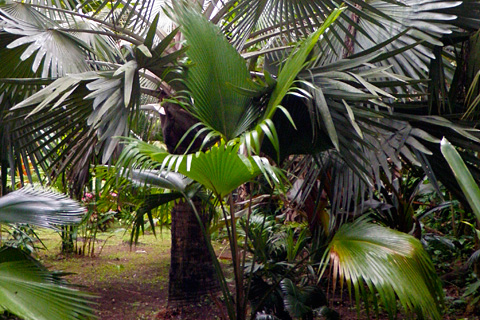
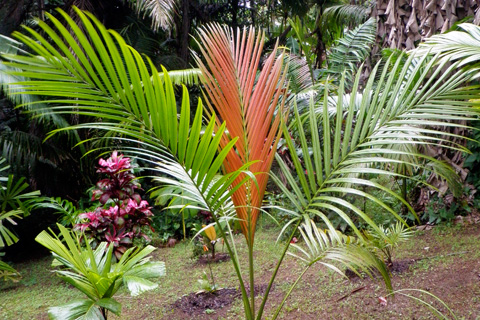
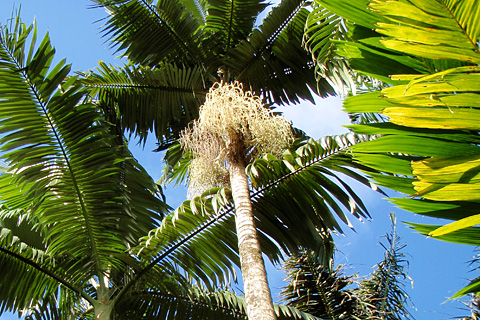
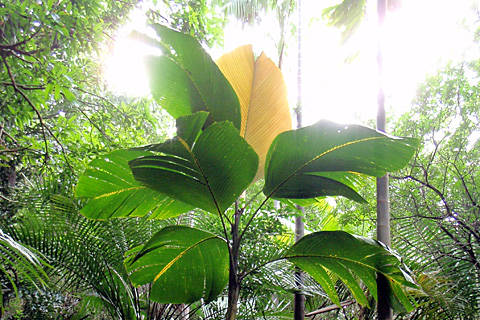
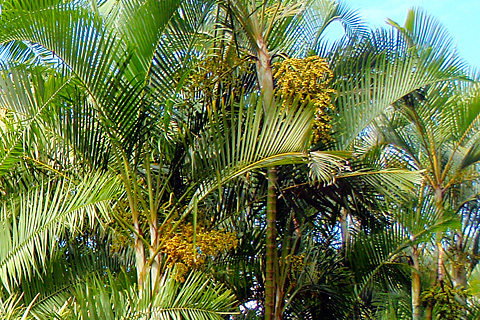
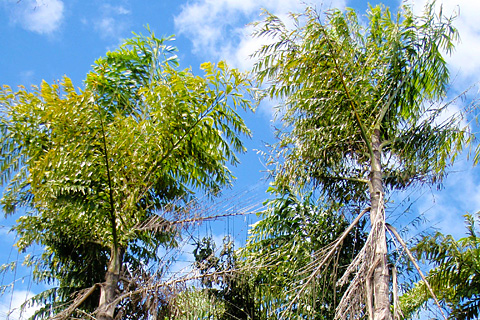
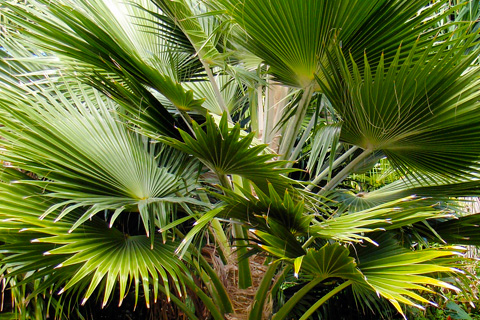
Most palms are quite easy to grow but take time to mature. Many varieties are even drought tolerant once established. No matter where you live on Maui there is a palm variety that is perfectly suited for your yard. Whether it be a miniature 4 foot small palm or one that grows to over 80 feet tall. Palms can be planted along driveways and footpaths, they can be used to supplement shade or serve as a visual barrier. Palms can also be used as a focal point planted alone in a garden or yard. Not only are palms planted for their beauty and shade but also for their food such as dates, coconuts an acai just to name a few. Palms can serve a purpose by sustaining high storm winds without major damage as well as reducing hillside erosion. Despite the function your palms serve, they will always remind you that you live in a tropical climate and paradise is only steps away.
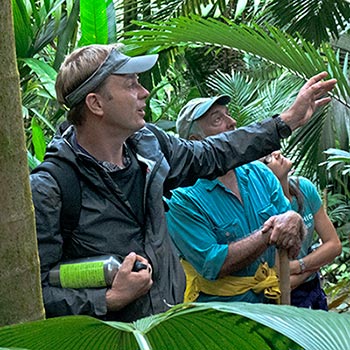
There are a few basic rules to follow when growing palms. First and foremost, know your palm and its growth habits and requirements. Most importantly don’t damage the top most central spear. If this young leaf frond is damaged or dies the overall health of the tree becomes compromised. Secondly, be careful not to damage the root strands (especially near the palm base). Damaged roots die back to the trunk of the palm and the root regeneration can take a long time. When transplanting a palm already in the ground, make sure to dig up as much of the immediate root stock as possible. Make the new hole 1.5 to 2 times bigger than the old hole. Once the palm is transplanted make sure it receives plenty of water for the first two weeks. Palms growing in Hawaii often lack potassium, so use fertilizers with a slightly higher source of potassium (K) such as a mixture of 12 – 4 – 12. Palms also respond well to fertilizers with traces of manganese and magnesium. Fertilize around the trunk under the entire canopy 2-3 time a year, less fertilizer is more. When maintaining your palms remember that unlike trees, palms do not heal wounds made to their trunks. When damage is done to the palm it will stay there forever. These holes can harbor insects and disease which will decrease the life span of the palm.
Most palms are quite easy to grow but take time to mature. Many varieties are even drought tolerant once established. No matter where you live on Maui there is a palm variety that is perfectly suited for your yard. Whether it be a miniature 4 foot small palm or one that grows to over 80 feet tall. Palms can be planted along driveways and footpaths, they can be used to supplement shade or serve as a visual barrier. Palms can also be used as a focal point planted alone in a garden or yard. Not only are palms planted for their beauty and shade but also for their food such as dates, coconuts an acai just to name a few. Palms can serve a purpose by sustaining high storm winds without major damage as well as reducing hillside erosion. Despite the function your palms serve, they will always remind you that you live in a tropical climate and paradise is only steps away.
There are a few basic rules to follow when growing palms. First and foremost, know your palm and its growth habits and requirements. Most importantly don’t damage the top most central spear. If this young leaf frond is damaged or dies the overall health of the tree becomes compromised. Secondly, be careful not to damage the root strands (especially near the palm base). Damaged roots die back to the trunk of the palm and the root regeneration can take a long time. When transplanting a palm already in the ground, make sure to dig up as much of the immediate root stock as possible. Make the new hole 1.5 to 2 times bigger than the old hole. Once the palm is transplanted make sure it receives plenty of water for the first two weeks. Palms growing in Hawaii often lack potassium, so use fertilizers with a slightly higher source of potassium (K) such as a mixture of 12 – 4 – 12. Palms also respond well to fertilizers with traces of manganese and magnesium. Fertilize around the trunk under the entire canopy 2-3 time a year, less fertilizer is more. When maintaining your palms remember that unlike trees, palms do not heal wounds made to their trunks. When damage is done to the palm it will stay there forever. These holes can harbor insects and disease which will decrease the life span of the palm.
Another important underlying factor in the success of cultivating any palm, plant or garden is the significance of the soil. The plants in the garden will only be as good as the soil they grow in. Fertile soil is precious. Organic compost material and time are the two most important ingredients for cultivating healthy soil. It will take time to establish active soil in areas that are deficient. With patience in palm growing you are guaranteed the gratitude of the beauty of all palms, young and mature and all that they can offer your garden and life.
Hawaii’s native palms are becoming rare in the wild. Competition for survival is fierce in our tropical climate and all too often the indigenous palms of Hawaii are overgrown by invasive plants or fall prey to rat/rodent predation. Therefore, native palms should be incorporated into each landscape design and introduced into other existing landscapes.
One recommended way to learn your palms is to study the botanical names first, this way there will be no confusion over commonly called palms of the same name. Also, another useful tool worth using is the google search engine using “images” as a search criteria so that way you can see the pictures of the palms. The following lists are a short example of their definitions.
Salt-Torerant Palms
| Drought tolerant Palms
|
Water Loving Palms
| Small Palms
|
On Maui it can be sometimes hard to find palms other than coconut and Dypsis lutensis (commonly called Areca palm). Networking with landscapers and other industry people is a great source as well as using online sites like Craigslist.org. Here is a quick list of palm suppliers throughout Maui.
MAUI
West Side:
Ukumehame Nursery – 550 Ehenene Street, Lahaina – 661-9100
South Side:
Ki-Hana Nursery – 1746 S. Kihei Rd., Kihei – 879-1165
Central:
Tropical Gardens of Maui – 200 Iao Valley Rd., Wailuku – 244-3085
Upcountry:
Pukalani Plant – Makawao/Kula AG park – 572-8950
Kula Hardware – 3100 Lower Kula Rd., Kula – 876-0734
Ho’olawa Farms – Hana Hwy, Haiku – 575-5099
Aina Waipio Farms, LLC – Haiku – 572-4016
Big Island
Kapoho Palms – Papaya Farm Rd., Pahoa (orders can be mailed) – 808-936-2580
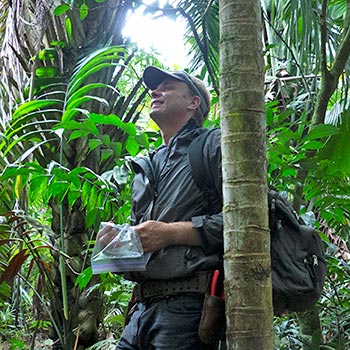

July 24, 2024
Thanks for sharing!